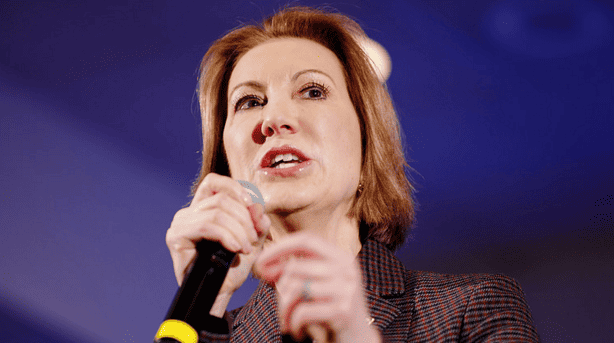How to Write a Meaningful Fundraising Email


When you run for elected office, you’re more than an aspiring politician. You’re a professional fundraiser who needs to find creative ways to bring in large sums of money.
Take, for instance, presidential hopeful Ted Cruz. A day after losing primaries in five states to Donald Trump, Cruz surprised the political world and announced a running mate, former Republican presidential candidate Carly Fiorina. That same day, his official campaign website switched to CruzCarly.com. The website includes — you guessed it — easy ways to donate to the campaign.
Most donation requests, like ones from Cruz, Trump et al, are impersonal. At best, the candidate will address a physical letter or email to your first name, but you know the rest of the content is the same for everyone. The best outreach strategy is to make the message special for each person.
No, Cruz can’t write an email tailored for each American. But if you stage a smaller-scale fundraising campaign for a company or organization, there are simple ways to make your message meaningful. The key is to include details that make the recipient feel valued.
How to Write a Meaningful Fundraising Email
For the template below, let’s imagine Jane Doe works for Acme Nonprofit and needs to reach out to past donors or people who have attended your recent events. The goal: to make each person consider a gift of some amount.
Actually, the real goal at the onset is for the person to respond. Once Jane opens the conversation, then she may be able to win him/her over.
So what’s the best way to encourage a response? In short, the details make the difference.
Here’s what the email can look like. Also remember the same tactics apply for a physical letter too.
Subject line: We have the momentum. Now, we need you too.
Hi [person’s first name],
I’m Jane Doe, a development associate for Acme Nonprofit here in [city]. Nice to meet you!
First, I want to say I’m impressed by [example from the person’s career; for instance, “what you’ve been able to build at Acme Corporation. It looks like you provide IT services to some major companies, and I’m sure it must be fun to work with Company XYZ. Congrats on your success!”]
I’m writing to tell you about Acme Nonprofit, what our team accomplished in 2016 and what’s on tap for the year ahead. In short:
- Accomplishment 1 [quantify success and link to examples as much as possible; for instance, “built 22 more playgrounds in underserved communities, which will impact the lives of over 1,300 more children”]
- Accomplishment 2
- Accomplishment 3
And we have even bigger plans for 2017, which include [1-2 examples of what’s to come or other ways to excite a potential donor].
Please let me know if you have a few minutes to learn more. I’m happy to find a time that’s convenient for you.
Thanks,
- Your first name
- Email signature
Deeper Insight
Notice how Jane opens the email. Right away, it’s customized.
First, I want to say I’m impressed by what you’ve been able to build at Acme Corporation. It looks like you provide IT services to some major companies, and I’m sure it must be fun to work with Company XYZ. Congrats on your success!”
How did Jane “find” the (fictitious) information on the person’s career? She googled the person’s name, learned about his company and used what she discovered to enhance her fundraising email. Now, the email is tougher to ignore because it’s not the exact same message to every person. It’s personalized and probably surprised the person because he didn’t expect it to contain any info about his own life.
Then, Jane puts Acme’s three best achievements in a bulleted list for better readability. She leans hard on numbers (“22 playgrounds” and “1,300 children”) to prove success.
Finally, Jane mentions 1-2 goals/plans for the coming year. Here is another spot in the email you can customize. Let’s say, in her research on the person’s career, Jane uncovered how the IT company has a robust internship program and likes to teach young people important tech skills. It just so happens Acme Nonprofit also strives to connect young people with technology-based careers.
Then, the line in the email could be something like, “And we have even bigger plans for 2017, which include a new initiative to teach underprivileged children how to code and build websites. I see Acme Corporation has a big internship program so you might find our program interesting.”
True, you may not always find a direct connection, but until you do your research, you never know.
Does my email template take longer than a standard email blasted out to 100 people? Of course it does. But most of the template is the same for every person; you only switch out the info on the person’s career to make the message authentic.
The goal is a higher response rate and, ultimately, more donations. You don’t get points for simply sending out a mass email. If no one acts on the email, then it didn’t work.
Remember to add details that make the person feel validated and important, and the response rate might surprise you.
Other strategies for fundraising emails?
Share below!
Featured photo: Michael Vadon (Flickr)



Related Articles
October 16, 2014
3 Emails That Could Change Your Career
Press “Send” and put your life in motion.
Read More
October 14, 2014
7 Ways You Try Too Hard in Job Applications
Bosses see right through it.
Read More
February 27, 2013
The Most Important Thing to Remember If You Work from Home
This week, Yahoo announced that employees can no longer work from home. Here’s the best way to make sure that doesn’t happen to you.
Read More